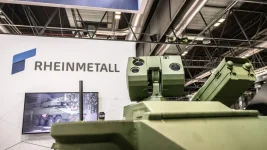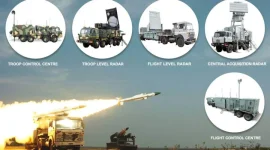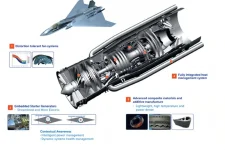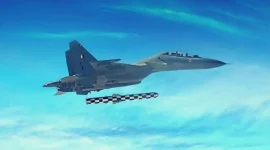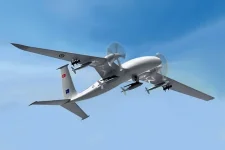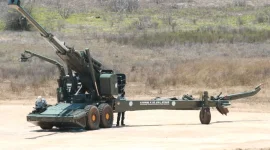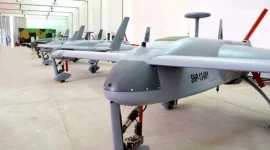- Views: 77
- Replies: 2
In a significant demonstration of tactical innovation, the Indian Air Force (IAF) has effectively utilised decoy drones, including the Banshee Jet 80+ uncrewed aerial vehicle (UAV), to mislead Pakistani air defence systems along the Line of Control (LoC).
Recent confirmations from Pakistani sources, noting debris from these drones shot down by their air defence units landing within Pakistan, have brought to light the IAF's sophisticated use of decoy strategies.
These drones, equipped with specialised technology to imitate the radar and electronic profiles of IAF fighter aircraft like the Su-30 MKI and MiG-29UPG, successfully tricked Pakistani air defence installations into revealing their operational locations.
This highlights India's advancing capabilities in modern warfare techniques.
The Banshee Jet 80+, a product of the British defence technology company QinetiQ, is a dual-jet training target UAV primarily designed for simulating threats and supporting military operational training exercises.
Powered by twin gas turbine engines, each providing 40 kg of thrust, the drone achieves a total static thrust of 80 kg. This allows it to reach speeds of up to 200 metres per second (approximately 720 kilometres per hour) in straight, level flight under standard atmospheric conditions.
When fitted with an auxiliary fuel tank, the Banshee Jet 80+ can remain airborne for over 45 minutes, offering a combination of high speed and operational endurance.
The particular effectiveness of the Banshee Jet 80+ in these operations stems from its payload capacity, which enables it to carry advanced electronic systems.
In the IAF's recent manoeuvres, these drones were outfitted with payloads that broadcasted signals mimicking the radar cross-section (RCS) – essentially how visible an aircraft is to radar – and electronic emissions of frontline fighter jets such as the Su-30 MKI and MiG-29UPG.
This sophisticated mimicry deceived Pakistani radar systems into identifying the drones as manned combat aircraft. Consequently, Pakistani air defence units engaged these decoys, thereby exposing their tactical positions.
The deployment of these decoy drones was reportedly prominent during recent tensions between India and Pakistan. Pakistani air defence systems, actively working to counter IAF aerial activities, fired upon these drones under the assumption that they were engaging actual fighter jets.
The subsequent recovery of debris from the downed Banshee drones inside Pakistani territory served as confirmation of their deployment in this role. This clever tactic enabled the IAF to identify and map Pakistani air defence infrastructure, including radar stations and surface-to-air missile (SAM) sites, without endangering the lives of pilots or risking valuable manned aircraft.
By emulating the electronic signatures of high-value aerial assets, the Banshee drones compelled Pakistan to use its air defence resources, such as missiles and radar tracking time, against relatively low-cost targets.
This strategy not only aimed to diminish Pakistan's defensive stockpiles but also critically exposed the geographical locations of their air defence systems. This intelligence allows the IAF to plan any potential future operations with enhanced precision.
The operation underscored the IAF's growing proficiency in integrating uncrewed systems into its broader air strategy, a crucial element of contemporary military engagements.
Technical Capabilities of the Banshee Jet 80+
The Banshee Jet 80+ is a versatile platform optimised for high-realism threat simulation, featuring several key attributes:- High Speed and Endurance: With a maximum speed of 200 m/s and a mission duration exceeding 45 minutes, the drone can sustain prolonged operations, effectively replicating the flight patterns of fighter aircraft.
- Payload Versatility: The drone’s capacity to carry specialised electronic equipment allows it to imitate the radar and infrared signatures of advanced aircraft, such as the Su-30 MKI, a twin-engine supermanoeuvrable fighter, and the MiG-29UPG, an upgraded multirole combat jet, both established assets in the IAF inventory.
- Compact and Economical: Being significantly lighter and less expensive than manned fighter jets, the Banshee serves as a cost-effective yet highly efficient tool for deception operations, thereby reducing risks to human pilots and expensive military hardware.
The confirmed application of decoy drones signifies a noteworthy development in the aerial dynamics between India and Pakistan, where uncrewed systems are increasingly influencing the nature of the operational landscape.
Pakistan's investment in advanced air defence systems, including Chinese-origin platforms like the HQ-9 and LY-80 SAMs, faces new challenges from India's innovative tactical approaches.
The IAF's decoy missions not only reveal potential vulnerabilities in Pakistan's radar and missile networks but also highlight possible limitations in their capabilities to counter high-speed, jet-powered UAVs such as the Banshee.
This strategic development is consistent with India's wider initiative to incorporate uncrewed systems into its national military doctrine.
The IAF has also been investing in indigenous counter-drone solutions, such as the DRDO's D4 (Drone, Detect, Deter, and Destroy) system, which was reportedly effective against Pakistani drone swarms.
The use of decoy drones complements these defensive measures, contributing to a multi-layered strategy that combines offensive deception with capabilities for neutralising hostile uncrewed systems.
The Indian Air Force's successful employment of decoy drones reflects a global trend in modern warfare, where uncrewed systems are increasingly utilised for a range of missions including deception, reconnaissance, and electronic warfare.
Nations such as Israel and the United States have a history of employing similar tactics, using drones like the ADM-160 MALD (Miniature Air-Launched Decoy) to confuse and overwhelm adversary air defences.
India's adoption and effective implementation of such strategies position it as a nation embracing forward-looking approaches within the global defence and security arena.

